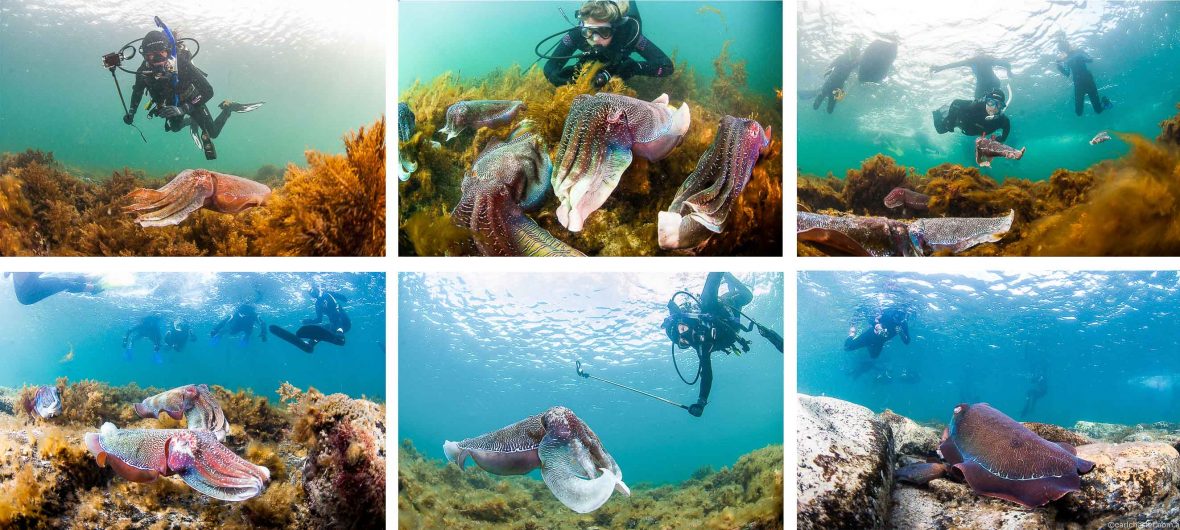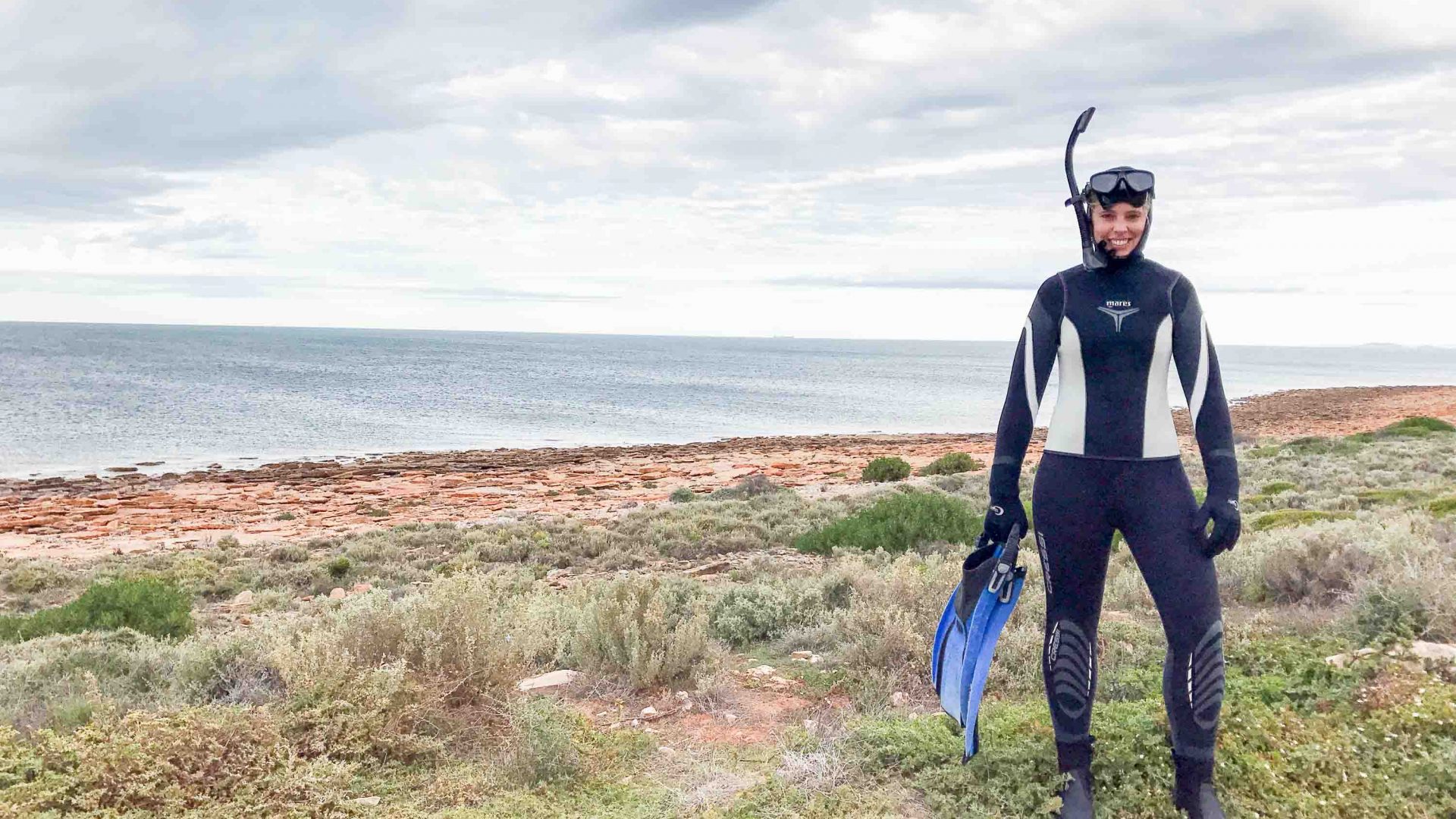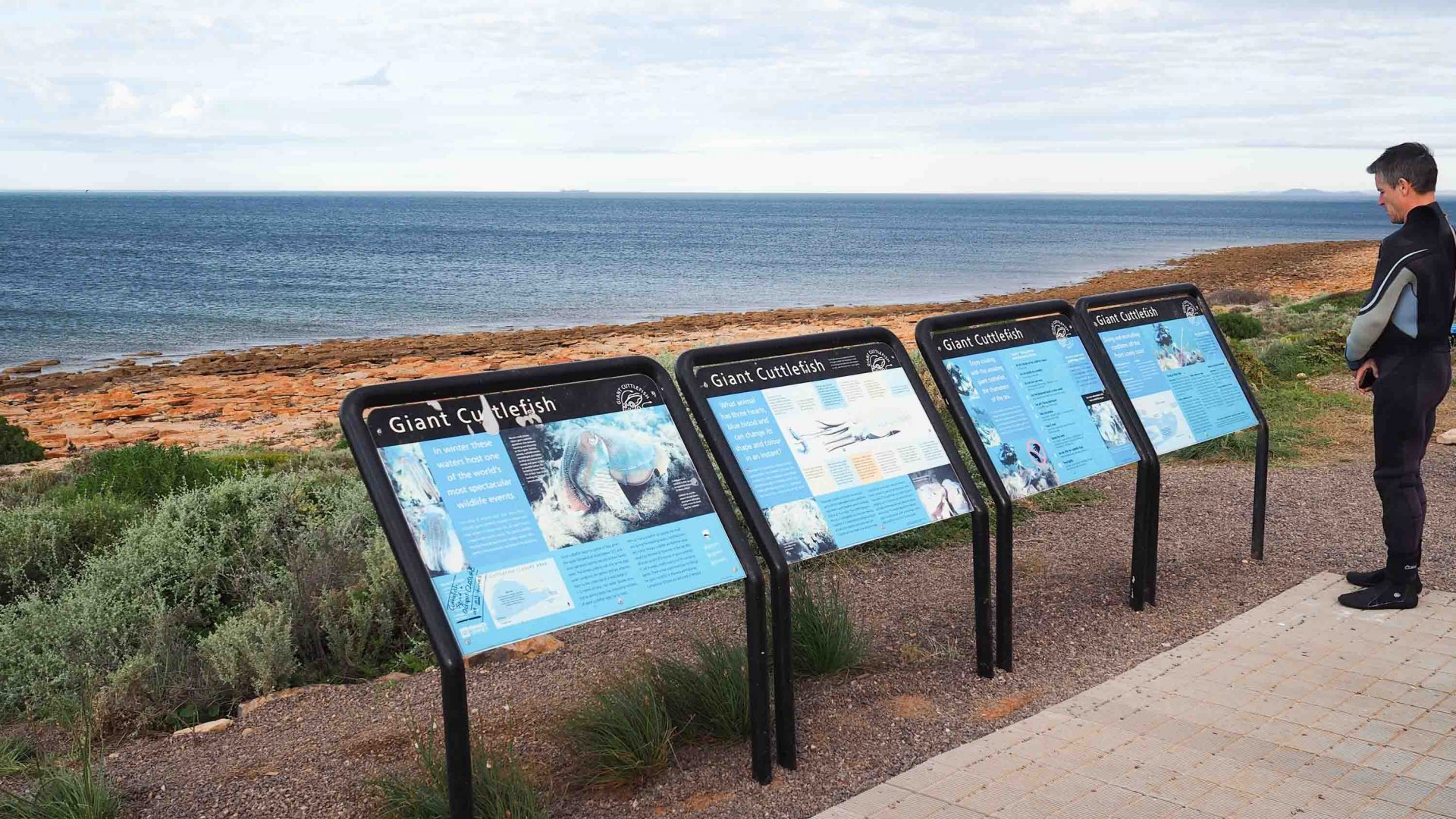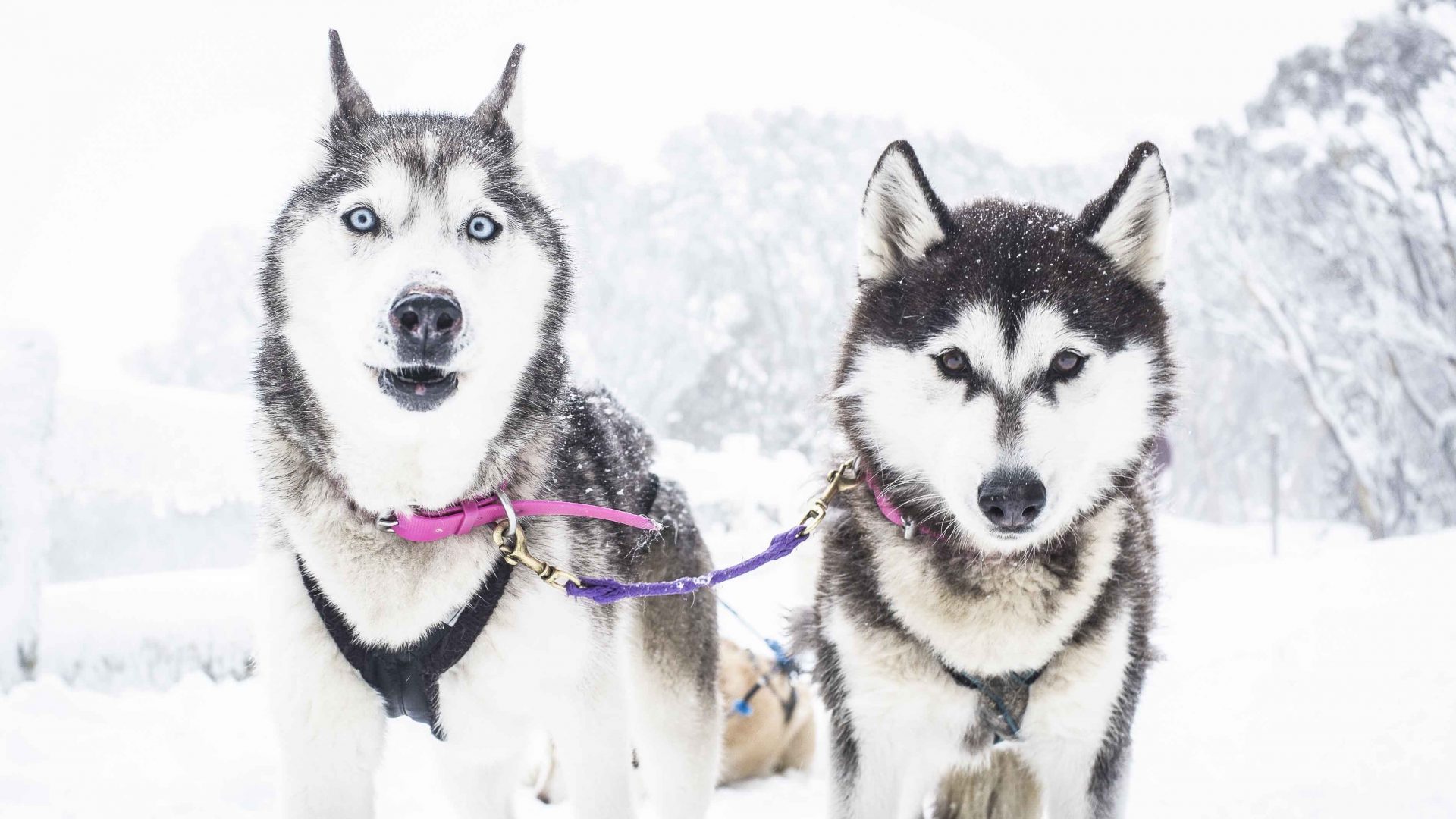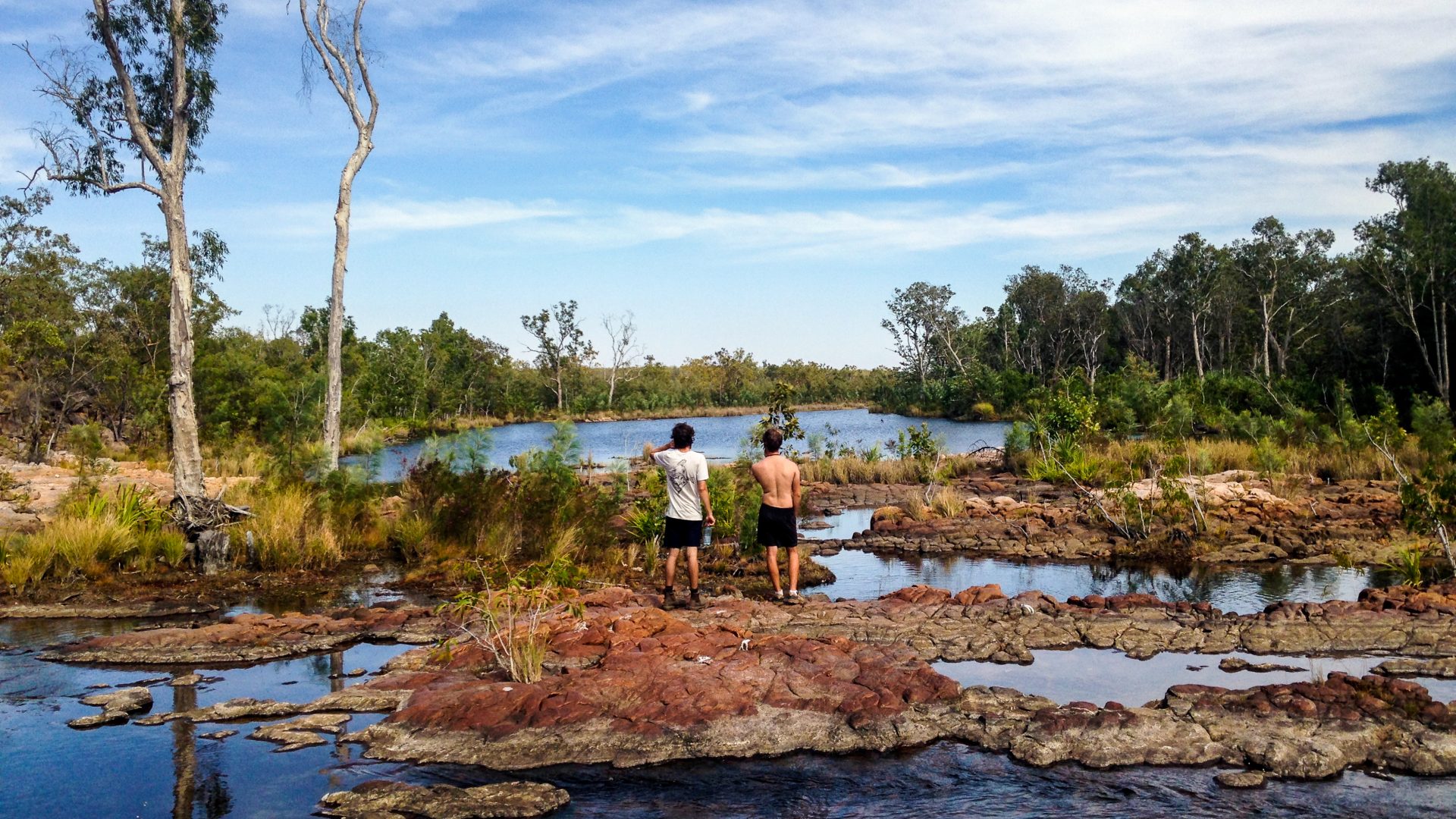Editor’s note: This article was published before the coronavirus pandemic, and may not reflect the current situation on the ground.
Each Southern Hemisphere winter, a natural phenomenon occurs off a remote stretch of the South Australian coast that will leave you blushing, finds Sarah Reid.
Shimmering like a hyperactive rainbow, the male cuttlefish suddenly makes his move, snaking an orangey tentacle around the female’s head and drawing it towards his own mouth. It looks like he’s about to eat her, but this mollusc has a decidedly more X-rated motive.
“The male actually squirts sperm into the female’s mouth, and she fertilizes it internally before depositing the eggs under a rock shelf,” marine educator and dive instructor Carl Charter had explained during my pre-snorkel briefing—adding that the kinky copulation sessions of Australian giant cuttlefish (Sepia apama) can last up to half an hour.
This female cuttlefish is having none of it, however, and expertly slips out of the lothario’s grasp and darts off in a flash of purple tentacles. But before I chalk it up as a win for the sisterhood, I spot two other males glowing turquoise in pursuit. I start to follow them, but get distracted by another male putting on a spectacular display of colors for a female, who looks sufficiently impressed. Just a few feet away, another pair of soft-bodied cephalopods are already getting down to business, totally unbothered by the human voyeur—me—floating less than two meters away.
RELATED: The art of embracing Australia’s nature
Nearly 400 kilometers (250 miles) north of Adelaide, near the top of the big V-shape missing from South Australia, the tiny Upper Spencer Gulf Marine Park provides the perfect conditions for the world’s only known mass spawning of giant cuttlefish.
Despite the surplus of males during the breeding season, the females are a picky bunch. In 2015, cuttlefish researcher Dr. Alexandra Schnell discovered that females can physically ‘swipe left’ by displaying a white stripe along the side of their body to indicate when they’re not interested. Some males inevitably don’t get the message, but at least the ladyfolk have a chance to make their intentions clear.
RELATED: Man versus nature in Australia’s’s far, far north
Bobbing above the frenzy in my wetsuit, I’m so entranced by the sex fest—which was filmed in this very spot for David Attenborough’s Blue Planet II—that I forget how cold it is for a minute. The water needs to be around 57 degrees Fahrenheit for the females to lay, and after about 30 minutes paddling around in water a few degrees cooler than that, I’m spent.
“Males are even partial to a bit of cross-dressing,” he says. “You’ll see smaller males change their color to mimic the females so they can move in on a mate without the big boys noticing.”
Following a trial run last winter, July will see Adelaide-based operator PureSA launch overnight tours from the capital during the season’s peak, including a cuttlefish info session and guided snorkel with Charter, who is also an underwater photographer, and Program Manager at Experiencing Marine Sanctuaries, a Whyalla not-for-profit that aims to foster appreciation and conservation of the marine environment.
If you’ve got your own wheels, Whyalla Diving Services can kit you out with snorkeling or scuba diving gear, and arrange a guide if you need one. During the past year, a shelter, picnic tables and change rooms have been installed at Stony Point, which is handy if you’re planning to make a day of it out here. You can even make a night of it, with a handful of designated camping spots nearby (though you’ll have to head into town for food).
Despite switching my wetsuit for three layers of warm clothing, I still can’t feel all of my toes by the time we make a pit stop in the Clare Valley, just over halfway back to Adelaide, for a restorative Shiraz. Any by the way, if there’s one thing you need after dropping in on 200,000 cephalopods literally shagging themselves to death, it’s a restorative Shiraz. Perhaps two.
––––






